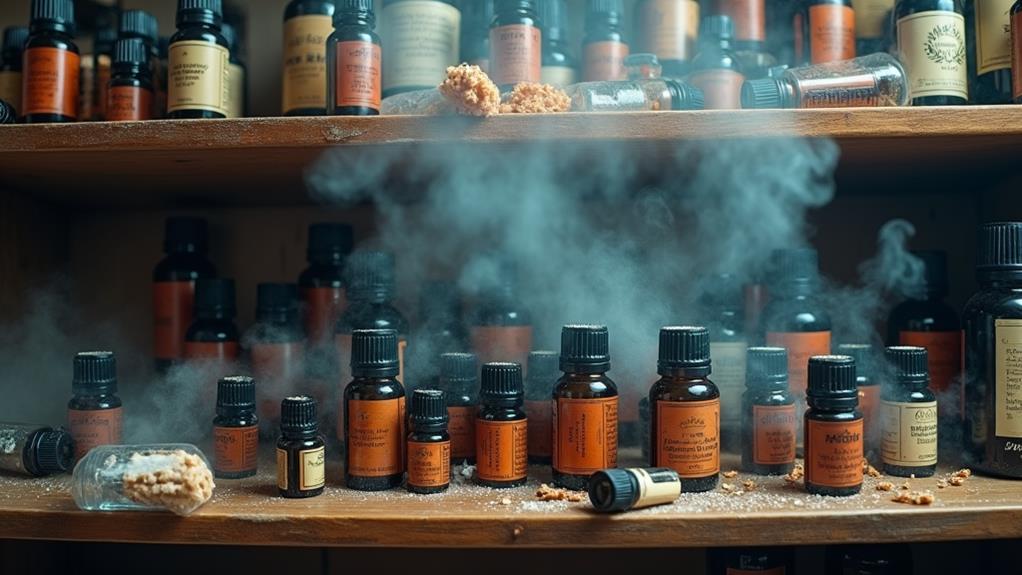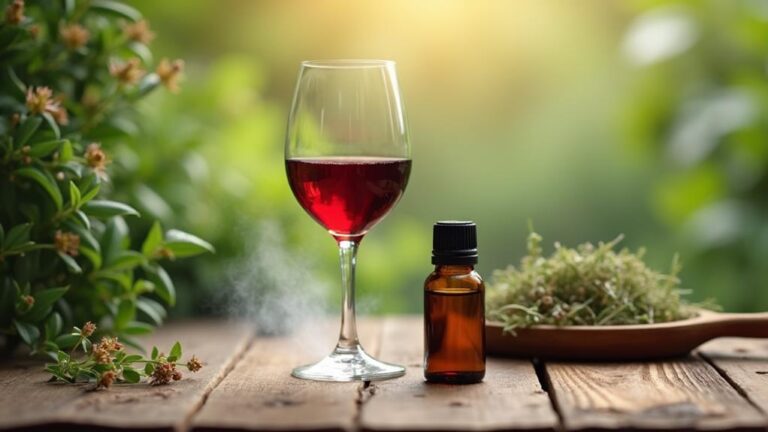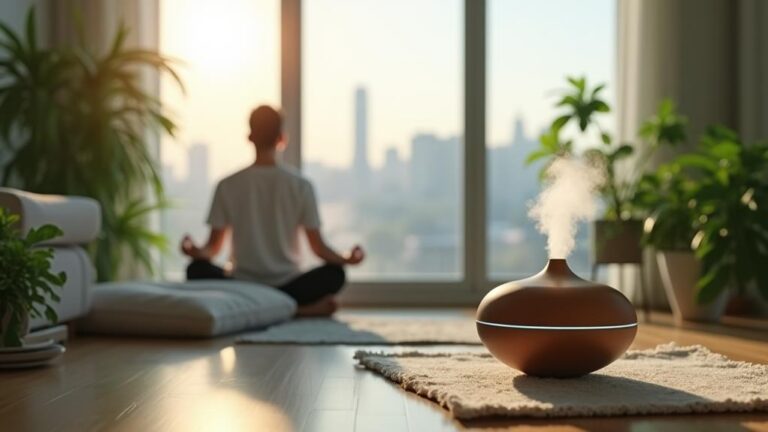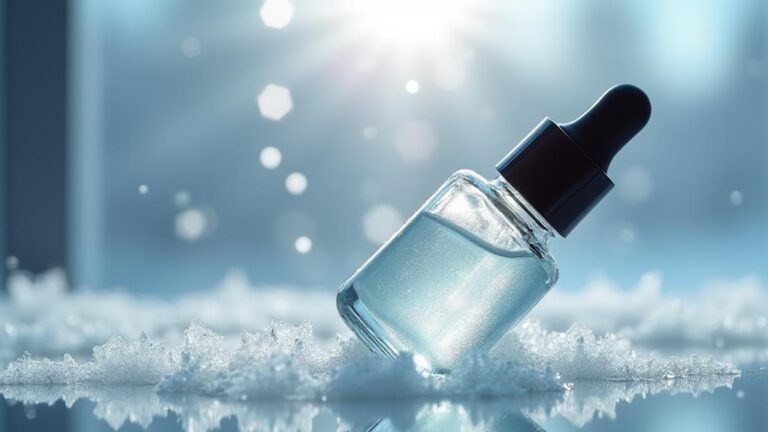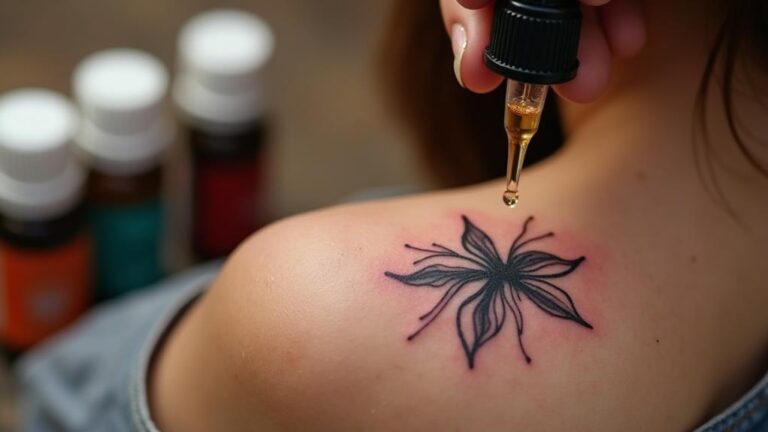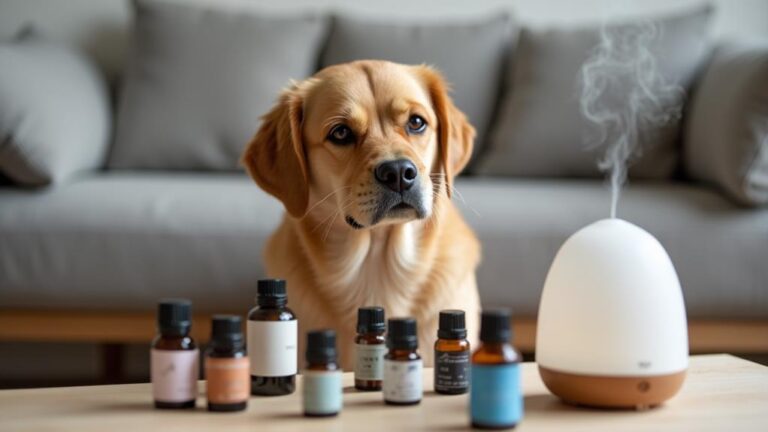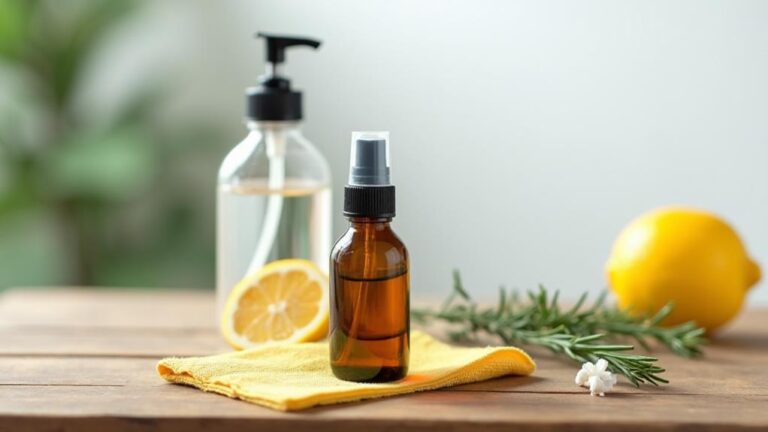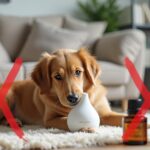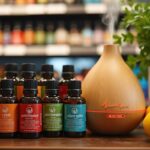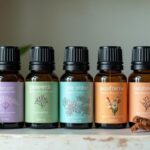As you incorporate essential oils into your daily routine, you're probably aware of their numerous benefits. However, have you ever stopped to ponder the potential risks of using too many at once? Essential oils can be incredibly potent, and overuse can lead to adverse reactions, including skin irritation and allergic responses. While it's tempting to blend multiple oils for a personalized scent or therapeutic effect, doing so can increase the risk of sensitization. You might be unknowingly putting your health at risk – but what exactly are the dangers of essential oil overload, and how can you use them safely?
Key Takeaways
- Essential oil overuse can lead to adverse reactions, skin irritation, and allergic responses due to potent compounds and synergistic effects.
- High concentrations of bioactive compounds in essential oils can interact with biological systems, causing toxicity and adverse reactions.
- Combining multiple essential oils can increase the risk of adverse reactions, and understanding potency and toxicity is crucial for safe use.
- Unregulated essential oil application can cause cumulative effects, leading to sensitization and making one more vulnerable to future adverse reactions.
- Adverse health effects of essential oil overuse include allergic reactions, respiratory issues, neurological problems, skin irritation, and digestive issues.
Risks of Essential Oil Overuse
Numerous cases of adverse reactions have been linked to the overuse of essential oils, highlighting the risks associated with their unregulated application.
When you use multiple essential oils simultaneously or in excess, you increase the risk of essential overload, where the body becomes overwhelmed by the potent compounds.
This can lead to adverse interactions between the oils and other substances in your body, such as medications, allergens, or environmental toxins.
Oil interactions can also occur when you combine essential oils with other personal care products, such as skincare or haircare products, that contain synthetic chemicals or fragrances.
These interactions can amplify the negative effects of the essential oils, leading to skin irritation, allergic reactions, or other adverse effects.
In addition, the cumulative effect of multiple essential oil applications can lead to sensitization, making you more vulnerable to future adverse reactions.
To minimize the risks associated with essential oil overuse, you must adopt a cautious approach and carefully evaluate the potential interactions between different essential oils and other substances in your environment.
Potency and Toxicity Concerns
When using essential oils, you're not just dealing with fragrances or scents – you're working with highly concentrated substances that can have potent effects on your body.
The potency of essential oils can be attributed to their high concentration of bioactive compounds, which can interact with your body's biological systems in complex ways. Pharmacokinetics studies have shown that essential oils can be rapidly absorbed into the bloodstream, where they can exert their effects on various organs and tissues.
The toxicity concerns associated with essential oils are also a significant issue.
Certain essential oils, such as pennyroyal and wintergreen, contain compounds that can be toxic in high doses. In addition, the synergistic effects of combining multiple essential oils can increase the risk of adverse reactions. When you use multiple essential oils together, their individual effects can interact and amplify each other, leading to unpredictable outcomes.
Being aware of these potential interactions is vital, and using essential oils with caution is necessary to minimize the risk of toxicity. Understanding the potency and potential toxicity of essential oils is vital for safe and effective use.
Safe Usage Guidelines
To guarantee safe usage of essential oils, it's crucial to develop a thorough understanding of their proper application and handling.
This involves adhering to specific storage tips and labeling protocols to minimize risks and certify effectiveness.
When handling essential oils, consider the following precautions:
- Store essential oils in a cool, dark place, away from children and pets, to prevent accidental ingestion or exposure to heat and light, which can cause degradation or oxidation.
- Use amber or dark-tinted glass bottles to protect the oils from UV radiation and prolong their shelf life.
- Label each bottle clearly with the oil's name, concentration, and date of purchase to prevent mix-ups and certify you use the oldest oils first.
Adverse Health Effects
Having established guidelines for safe usage, you're now better equipped to recognize potential risks associated with the misuse of essential oils. Understanding the adverse health effects is vital to guarantee your safety when using these potent substances.
When essential oils are used excessively or improperly, they can cause various health issues. Oil interactions can occur when using multiple oils simultaneously, leading to unpredictable reactions. Health thresholds can also be exceeded, resulting in adverse effects.
| Adverse Health Effects | Symptoms |
|---|---|
| Allergic Reactions | Skin irritation, itching, and redness |
| Respiratory Issues | Coughing, wheezing, and shortness of breath |
| Neurological Problems | Headaches, dizziness, and nausea |
| Skin Irritation | Burning, stinging, and blistering |
| Digestive Issues | Nausea, vomiting, and stomach pain |
You should be aware of these potential risks and take necessary precautions to avoid them. Always follow the recommended usage guidelines and start with small amounts to test your sensitivity. If you experience any adverse effects, discontinue use and consult a healthcare professional.
Blending Essential Oils Safely
Blending multiple essential oils can substantially increase their potency, making it crucial to exercise caution when combining them.
You must consider the individual properties of each oil and how they interact with one another to avoid adverse effects. When creating blends, consider dividing essential oils into three essential layers: top notes (light, fresh scents), middle notes (floral, spicy scents), and base notes (rich, woody scents). This approach allows you to balance the aromatic profiles of the oils and create harmonious blends.
Some key considerations when blending essential oils safely include:
- Start with small amounts: Begin with a small number of oils and gradually add more to achieve the desired effect.
- Consider the chemical composition: Certain oils, such as citrus and mint, can be quite potent and may overpower other oils in a blend.
- Test the blend on a small area: Before using a new blend, test it on a small area of skin to check for any adverse reactions.
Frequently Asked Questions
Can Essential Oils Be Used by Breastfeeding Mothers?
When using essential oils while breastfeeding, you should exercise caution to avoid affecting milk supply and minimizing baby exposure. Certain oils, such as peppermint and sage, can decrease milk production, so you must use them judiciously.
How Do I Store Essential Oils at Home Safely?
As you carefully manage your oil routines, the real question is: are you storing them safely? Implement these vital storage tips: keep essential oils in a cool, dark place, away from children and pets.
Can I Apply Essential Oils Directly to Pets?
You're applying essential oils to your pet's skin, but exercise caution. Furry friends have thinner skin than humans, so always dilute essential oils with a carrier oil to avoid irritating their sensitive pet skin.
Are Essential Oils Safe for Use in Cooking Recipes?
When incorporating essential oils in cooking recipes, you must follow culinary guidelines and consider flavor profiles. You'll be using them as flavor enhancers, so it's vital to research and use food-grade oils in moderation.
Can I Use Essential Oils in My Aquarium Water?
Floating fragrant formulas in your aquarium can be fatal. You're flirting with aquatic toxicity and fish stress by adding essential oils to the water, so it's wise to avoid this practice altogether.
Conclusion
Carefully crafting your essential oil collection is vital to your well-being. Overloading on oils can overwhelm your body, precipitating perilous problems. Prudent practices, such as precise usage and potent pairing, are pivotal in preventing risks. By prioritizing safe usage guidelines and sensitive blending, you can peacefully perfume your space without compromising your health. Promote a harmonious relationship with essential oils by being mindful of their potent properties.


